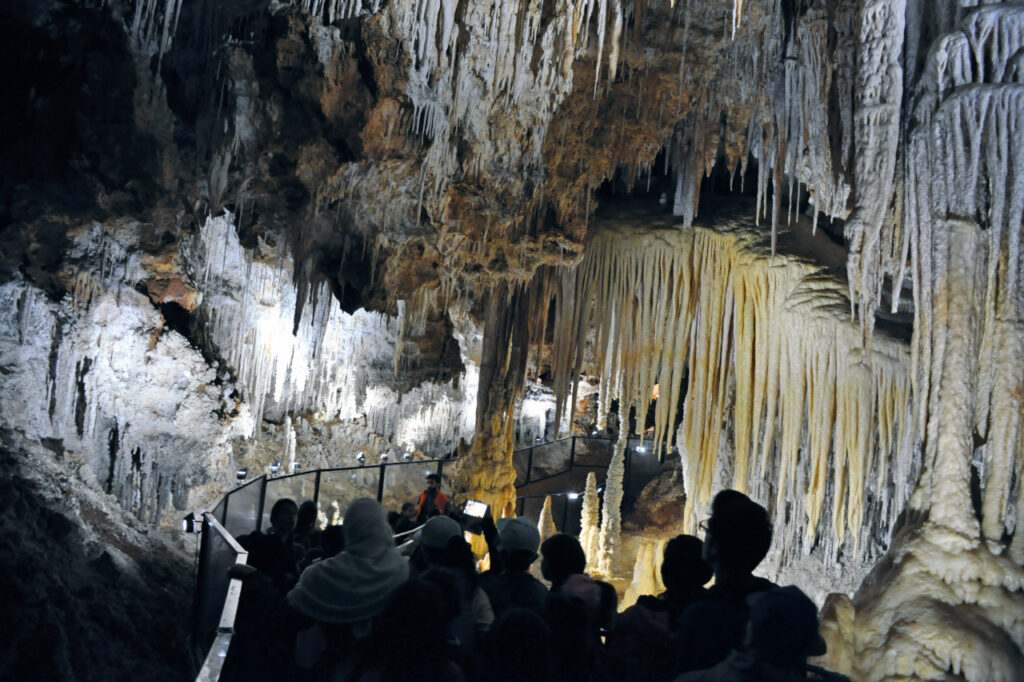[LUM#6] The shared university
For the past eight years, the university has been exporting its expertise to Montpellier's priority neighborhoods. Sixty students work with children from twelve schools, in class and on field trips. The program includes meetings and exchanges.

May 2017, Clamouse cave, in the Montpellier hinterland. Wide-eyed, schoolchildren from Le Petit Bard and their teachers visit the underground decor of rocks and crystals hundreds of thousands of years old. In the evening, they'll return to their "priority" district, steeped in this breathtaking spectacle.
In the middle of the group, a singularity, a richness: students from the Faculty of Science accompany the children. To raise the profile of the University and pass on scientific culture in the neighborhoods, they are taking part in the UniverlaCité project, launched by the University of Montpellier to bring together two worlds that don't often cross paths.
Stalactite and stalagmite
Faced with limestone formations, Mehdi, a Bachelor 3 student, gets the kids involved: " What do you call the one that goes down? And the one that goes up? Enthusiastic replies: " It's the stalactite that goes down, the stalagmite that goes up! The students' interventions in the classes before the outing bore fruit. A flurry of questions followed: " Why is this stalactite so big? Has it been there for a thousand years? " Given its size, hundreds of thousands of years ," says one student. Faces light up in the crystal corridor, but also in front of the "eccentrics", zigzagging concretions that seem to defy the laws of gravity.
Once back in daylight, the group set off to discover the aquatic and terrestrial fauna along the banks of the Hérault. A breath of fresh air for students and children alike, as they observe frogs, shrimps, grasshoppers, beetles... With butterfly net in hand, a mother accompanying the class becomes a naturalist, delightfully searching for insects in the bushes. Even the schoolteachers learn more about zoology from the students. As biologists, they bring back memories of their practical work, when they have to recognize dragonfly larvae and viperine snakes.
Each class is hosted at the college
Today, UniverlaCité involves sixty science students in twelve schools in the Mosson and Petit Bard districts of Montpellier. Over the course of the year, they meet around 700 children in class and on field trips. At the end of the year, each class is welcomed to the science faculty. To accomplish their mission, the students are supervised by Thierry Noëll, the project's instigator and official UniverlaCité project manager at the University of Montpellier since 2009, assisted by his colleague Sylvie Lanau. " We supervise the students, but they don't receive any specific training: the project is built spontaneously, through human interaction ".
" Going to university confers a certain responsibility towards society. Students are thinking things through, and are eager to share. By going out into the neighborhoods, they represent the university. The project brings ambition, openness and connection to children, but also to students," explains Thierry Noëll, who believes in the calming virtues of the presence of students in neighborhoods. From next year, UniverlaCité will be expanding to six to eight more schools.
UM podcasts are now available on your favorite platforms (Spotify, Deezer, Apple podcasts, Amazon Music...).